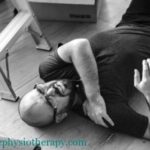What is Discoid Meniscus
Every knee has C- shaped medial and lateral meniscuses. These are fibrocartilage structures that absorb stress and act as cushions between the tibia and femur in weight-bearing activities. At birth, the meniscus is not C-shaped, but discoid (round like a discus).
As kids grow and start to walk, the meniscus starts to develop into its normal C-shape. In approx. 3-5% of children, the lateral meniscus continues to stay discoid with growth. Hence the condition is called “Discoid meniscus”.
Symptoms
Parents with their children of 6-8 years come walking in the clinic with complaints of snapping or clicking sound with knee movement. At times this is overlooked as no pain is felt, the patient may present in the early days of adolescence with increasing sports activity.
However, in most cases it is pain-free and the clicking noise is the only symptom. In some cases, as the child grows older, the click increases and may cause recurrent locking, making it unable to straighten or bend the knee fully. With locking, pain also appears in the knee.
Diagnosis
The X-ray is not helpful in diagnosing the case; an MRI is usually the investigation of choice to visualize the discoid meniscus.
Treatment of Discoid Meniscus
- Conservative
If there is no significant locking or pain, it can be managed with conservative treatment mainly physiotherapy. The treatment aims at improving muscle strength balance and stretching of tight structures around the knee. Proprioceptive and knee control exercises are taught to the patient to reduce abnormal stresses to the joint.
Consult a Physiotherapy nearby to know more about the knee conditions and the best possible treatment options for them.
- Surgical
In cases with significant disability, surgical excision may be needed. A partial excision to preserve the cushioning function may be sufficient. Consult with an Orthopaedic Surgeon for a surgical opinion.





